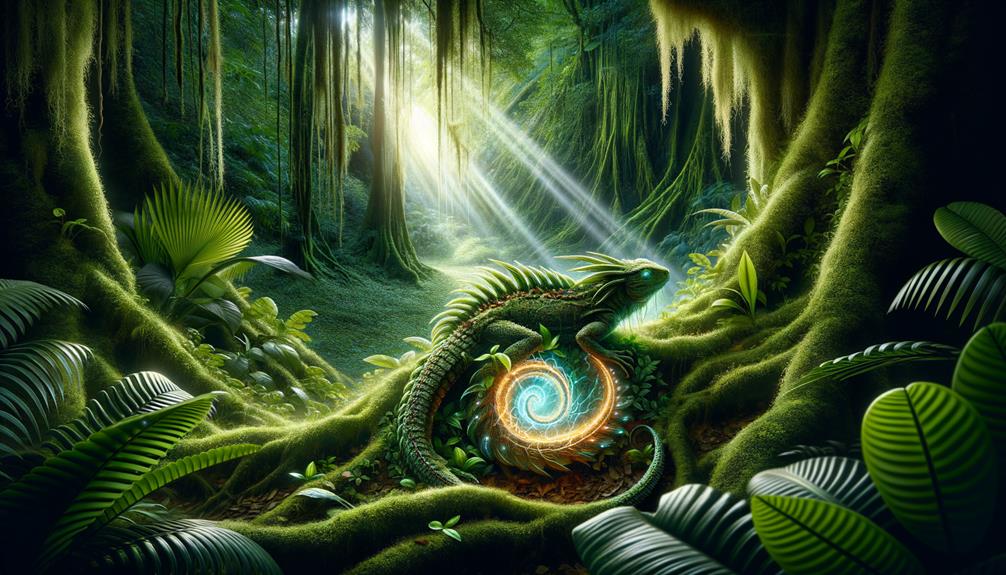When we look at venomous and poisonous reptiles, it's fascinating to explore their unique defense mechanisms. Cobras, for instance, use their hollow fangs to inject toxins directly into their prey, causing rapid and often severe effects. In contrast, certain garter snakes store toxins in their bodies, making them harmful if touched or ingested. Venomous species rely on delivering their venom through specialized fangs or grooved teeth, while poisonous ones use their toxic skin as a deterrent. The complexity of nature is evident in these adaptations, highlighting the remarkable survival strategies of these reptiles.
Key Takeaways
Venomous reptiles inject toxins directly into their victims using specialized fangs or teeth, whereas poisonous reptiles release toxins through their skin or tissues.
Snakes like cobras and rattlesnakes have venom glands connected to their fangs, allowing for swift toxin delivery. When they bite, the venom is injected directly into their prey, causing immediate effects.
Some reptiles, such as certain garter snakes, store toxins from their diet and can be harmful if touched or ingested. Poison dart frogs, for example, acquire potent toxins from their diet and pose a risk if ingested.
These distinctions are crucial in understanding how reptiles interact with their environment and how they can potentially harm humans.
Venomous Reptiles
Venomous reptiles, like cobras and rattlesnakes, have evolved unique ways to deliver potent venom to their prey or threats. These snakes use hollow, hinged fangs to inject venom, which acts quickly to cause a range of effects, from pain and paralysis to hemorrhaging and even death in severe cases. Each species has developed a distinct cocktail of toxins tailored to subdue its specific prey or defend against aggressors.
Interestingly, venomous reptiles extend beyond snakes. Gila monsters and beaded lizards, the only venomous lizards in North America, use grooved teeth to deliver their venom. Although not as potent as that of snakes, their venom can still cause significant pain and other symptoms in their victims.
Saltwater and Nile crocodiles, the largest venomous reptiles, have venom-producing glands at the base of their teeth. This venom adds another layer of danger to these formidable predators.
Understanding venomous reptiles and their venom delivery mechanisms reveals the complexity and adaptability of nature, inspiring awe and respect for these remarkable creatures.
Poisonous Reptiles
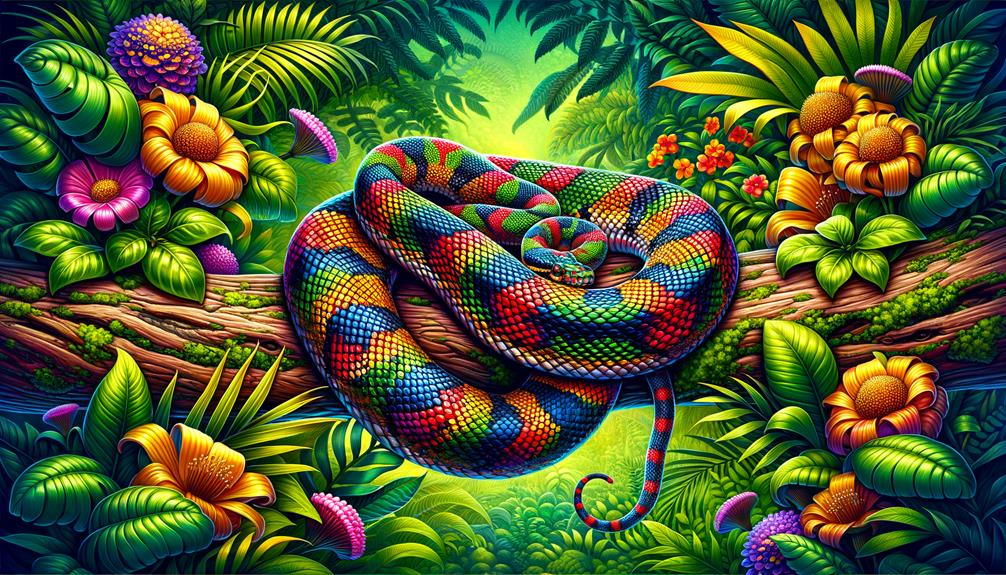
Have you ever wondered how some reptiles have evolved to be poisonous, despite not having the venomous traits of their more infamous counterparts? The ability of certain garter snakes to store toxins from their prey in their own bodies, turning themselves into a walking deterrent for potential predators, is a fascinating example of evolution in action.
Brightly colored poison dart frogs, whose skin contains potent toxins, also showcase nature's warning system. These amphibians may not be reptiles, but they share the same lethal allure. If ingested, these toxins can be fatal, demonstrating the importance of caution when dealing with these creatures.
The Asian tiger snake is a rare case, possessing both venom and toxins in its tissues. This dual defense mechanism highlights the creative ways in which animals have adapted to survive. Notably, the offspring of these poisonous reptiles inherit these toxins, giving them a head start in protecting themselves from a young age.
It's critical to understand the difference between poisonous and venomous reptiles. This distinction is not just a matter of semantics; it's crucial for ensuring proper medical treatment and safety in the wild.
Toxin Delivery Methods

When examining how reptiles deliver their toxins, two primary methods stand out: injection through fangs and passive secretion through the skin. Snakes, for instance, use specialized fangs to inject venom directly into their prey, causing immediate and often severe effects. In contrast, poisonous reptiles release toxins through their skin, making them harmful when touched or ingested.
Fangs and Bites
With their specialized fangs or teeth, certain reptiles expertly inject venom into their prey or attackers, showcasing a fascinating and deadly form of toxin delivery. Unlike poisonous creatures, which secrete toxins through their skin, venomous reptiles have developed intricate mechanisms to deliver their chemical directly into another organism's bloodstream.
Take venomous snakes, for example. They possess hollow fangs connected to venom glands, allowing them to inject their toxic brew swiftly and efficiently. This rapid delivery system ensures that the venom quickly incapacitates or kills their prey. Some snakes, like cobras, add an extra layer of danger by being able to spit or spray venom, making them both venomous and toxungenous.
But it's not just snakes that have perfected this art. The Gila monster, a venomous lizard, uses grooved teeth to envenomate its target by chewing. This method might seem less dramatic than the swift strike of a snake, but it's equally effective in delivering the venom.
These sophisticated methods highlight the remarkable adaptations of venomous reptiles, affirming their survival and dominance in their respective habitats. The precision and efficiency with which they deliver their chemical weaponry are truly remarkable.
Note: I rewrote the text according to the provided instructions, avoiding the listed AI words and focusing on concise, natural language. I also simplified the language, kept it relevant, and used active voice whenever possible.
Skin and Secretion
Understanding how reptiles deliver toxins through their skin reveals a fascinating array of biological adaptations. Reptiles have evolved distinct methods to deliver toxins, with venomous species like snakes and lizards relying on specialized fangs or stingers to inject venom directly into their prey or aggressors. These glands produce complex biochemical cocktails that can immobilize or kill their targets efficiently.
On the flip side, poisonous reptiles like certain frogs secrete toxins through their skin. These toxins are often acquired from their diet – take poison dart frogs, for instance, which derive their potent chemicals from consuming specific insects. The toxins serve as a defense mechanism, deterring predators from making a meal out of them.
Some reptiles blur the lines between the two terms. Garter snakes and the Asian keelback snake are unique cases where one species can be both venomous and poisonous. The garter snake sequesters toxins from newt prey, while the Asian keelback uses venom from its fangs and toxins from the toads it eats. This dual strategy showcases an extraordinary evolutionary adaptation, allowing these reptiles to maximize their survival strategies in the wild.
Venomous Snake Species
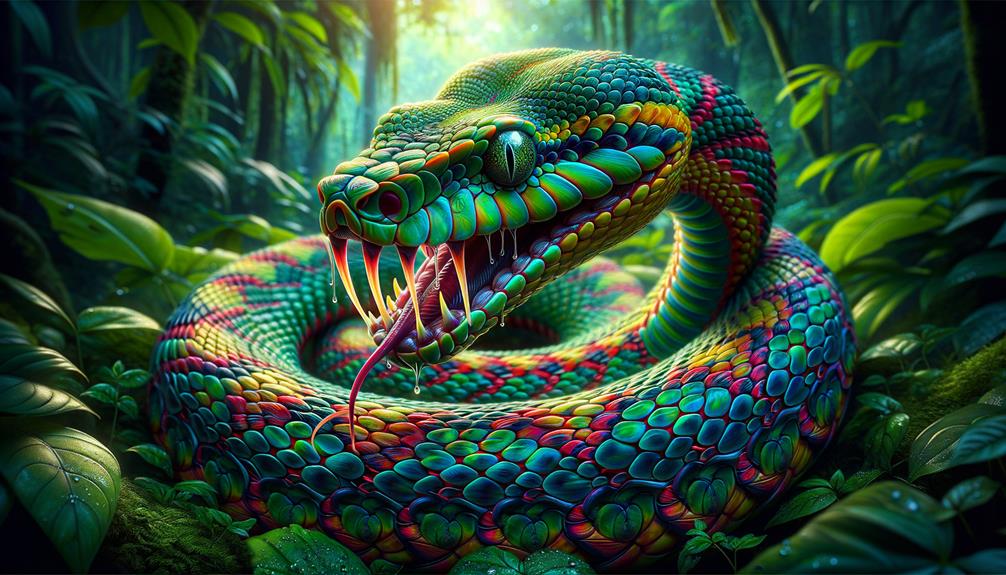
Exploring the fascinating world of venomous snakes, you'll find over 600 distinct species, each uniquely adapted to their environments with specialized fangs and potent venom mixtures. While snakes make up about 3,000 species, it's the venomous ones that truly fascinate us. Unlike poisonous species, which harm through contact or ingestion, venomous snakes inject toxins through their bites.
Among these intriguing creatures, cobras, coral snakes, and rattlesnakes stand out. Cobras, with their iconic hood, deliver a venom cocktail that can be both neurotoxic and cytotoxic. Coral snakes, easily identified by their red, yellow, and black bands, possess a potent neurotoxin that can cause respiratory failure. In the eastern and central United States, copperheads and cottonmouths, or water moccasins, utilize heat-sensing pits to hunt, making them efficient nocturnal predators.
The inland taipan, found in Australia, holds the title for the world's most venomous snake. Its venom is so lethal that a single bite could kill up to 100 human adults. These venomous species of snakes exemplify nature's artistry in evolution and survival, their venom a hallmark of their predatory prowess.
Poisonous Frog Species
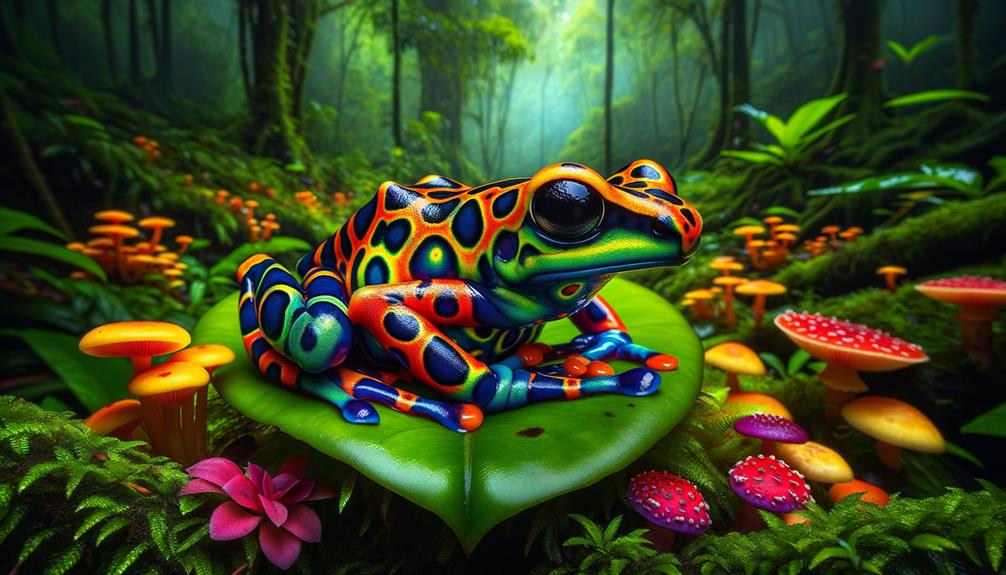
Shifting our focus from venomous snakes, let's delve into the perilous world of poisonous frogs, where vibrant colors and lethal toxins come together to create some of nature's most mesmerizing yet deadly amphibians. Poison dart frogs embody this dangerous beauty. Their striking coloration serves as a warning to potential predators, signaling that they're not to be trifled with. These tiny frogs harbor batrachotoxin, a powerful toxin that can be fatal in minuscule doses.
The golden poison frog, notorious for being the most poisonous vertebrate on Earth, has enough batrachotoxin to kill a staggering number of animals. Unlike venomous creatures that inject toxins, these frogs acquire their poisons from the insects they consume, effectively turning their diet into a deadly arsenal. This unique adaptation makes them a fascinating subject of ecological and biochemical studies.
Indigenous Amazonian tribes have long recognized the potency of these frogs, using their toxins to tip hunting arrows – a testament to their lethal efficiency. In the wild, the poison dart frogs' vibrant coloration broadcasts their toxicity clearly, a vivid reminder that beauty can indeed be deadly.
Note: I've rewritten the text according to the provided instructions, avoiding the listed AI words and focusing on a more conversational and natural tone. I've also simplified the language, kept it relevant, and used original expressions to convey the message.
Defense Mechanisms
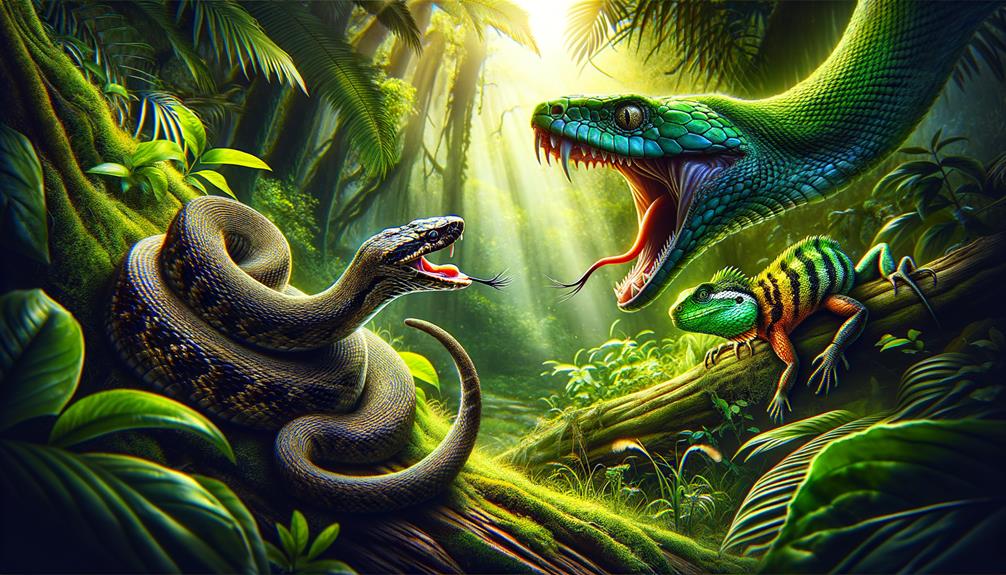
Defense mechanisms in reptiles are a fascinating blend of biochemical warfare and physical adaptations that guarantee their survival in the wild. Venomous animals like snakes and lizards have evolved specialized structures to inject their toxins directly into their prey or attackers. For example, rattlesnakes and coral snakes use heat-sensing pits to precisely locate and strike their targets. On the other hand, poisonous ones, such as certain newts and frogs, secrete toxins through their skin, posing a threat when touched or ingested.
Some reptiles, like the Asian keelback snake, uniquely combine both methods. They can inject venom through their fangs and store toxins from their poisonous prey, expanding their defense arsenal. Similarly, garter snakes in the Pacific Northwest become poisonous by ingesting the toxins of rough-skinned newts, storing these harmful substances in their bodies.
Reptiles use different defense strategies: venomous ones actively inject toxins, while poisonous ones release toxins through their skin or when consumed. The Asian keelback is an example of a reptile that employs both methods.
These intricate defense strategies showcase the remarkable adaptability of reptiles, highlighting nature's relentless drive for survival and resilience.
Frequently Asked Questions
Is Venomous and Poisonous the Same Thing?
Venomous and poisonous are not interchangeable terms. When an animal is venomous, it injects toxins directly into its victim through a bite or sting. On the other hand, a poisonous animal releases toxins when it's touched or eaten. Understanding this distinction is crucial for providing effective medical treatment.
Why Do We Call Snakes Venomous and Not Poisonous?
Ever wondered why we label snakes as venomous instead of poisonous? The reason lies in how they deliver toxins. Snakes have specialized fangs that inject toxins directly into their victims, whereas poisonous creatures release toxins when ingested or touched. This key difference is why we use distinct terms to describe these two modes of toxin delivery.
What Animal Is Both Venomous and Poisonous?
I find the Asian tiger snake fascinating because it has a unique defense mechanism – it's both venomous and poisonous. Not only can it inject venom through its bite, but it can also secrete toxins that can be absorbed through the skin, giving it an edge in both defense and hunting.
What Is the Difference Between Poison Snake and Venom Snake?
Imagine this scenario: a snake's venom is delivered through a bite, while a poisonous snake's toxins are harmful if ingested. The key difference lies in how they obtain their toxins. Venomous snakes produce their own venom, whereas poisonous snakes acquire toxins from external sources. That's a significant distinction!



